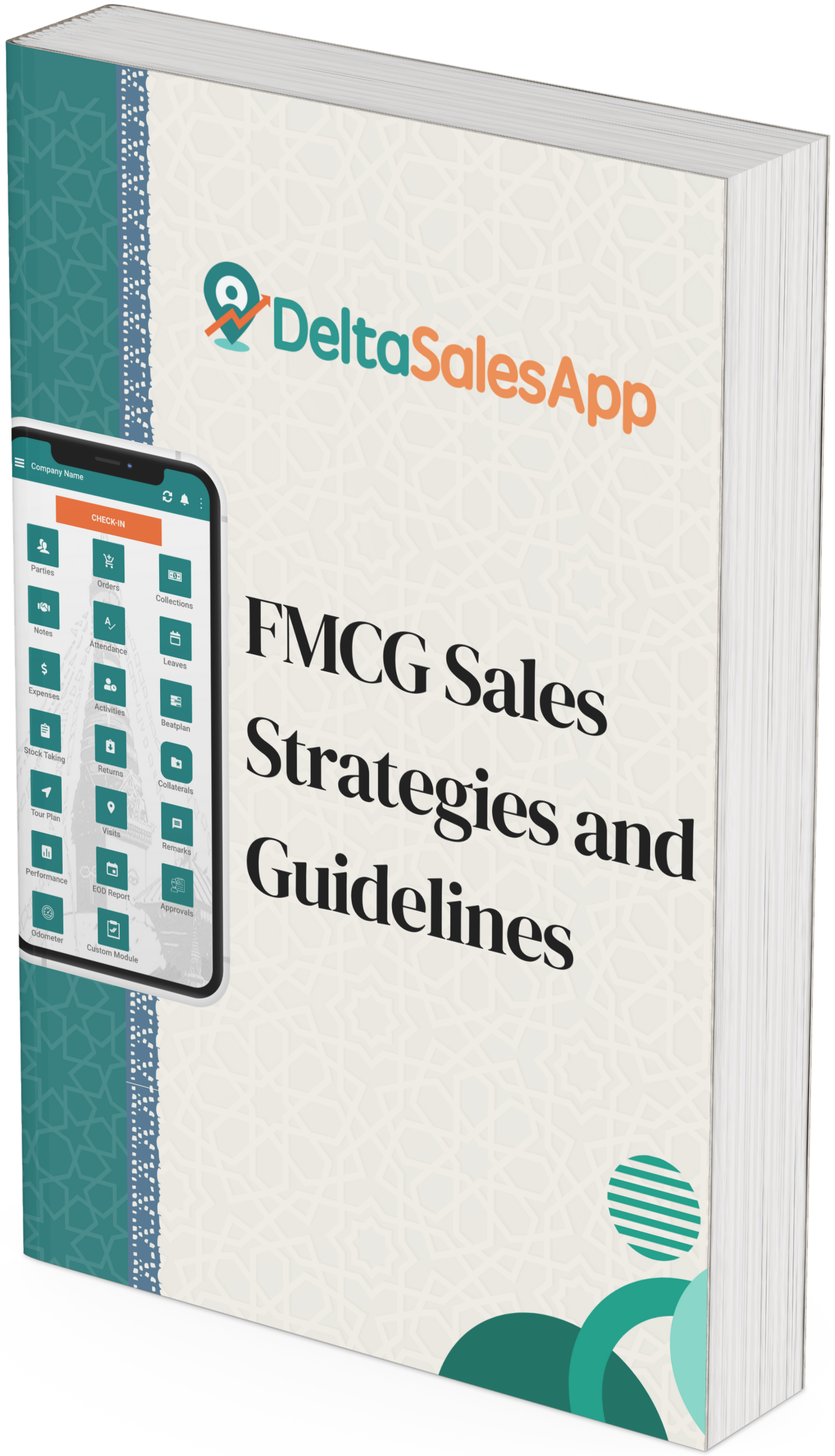10 Metrics to Track for High-Performing Field Sales Teams

For overseeing a sales force out in the field, relying solely on intuition is no longer sufficient. Achieving success in the current competitive environment requires evidence-based understanding-and that is precisely where employing a field sales app to record the correct statistics can be crucial.
Consider your sales personnel akin to a sports team: simply wishing for good performance isn't enough. You must understand who is generating results, who is supporting those efforts, and where you are losing ground. Likewise, field sales supervisors need to monitor vital performance indicators (KPIs) that show what is effective, what is lacking, and how to boost total output.
Within this resource, we will examine the leading 10 figures every highly effective field sales unit ought to observe, the significance of each, and how appropriate software can transform raw data into practical knowledge.
The Importance of Monitoring Sales Figures
Before exploring the specific data points, let's pause. What makes these measures so vital?
Sales performance indicators function like your company's navigation system. They reveal if your personnel are heading the correct way and at what pace. Absent them, you're operating without visibility-speculating which paths lead to favorable outcomes.
When outside representatives cover diverse regions, it's simple to lose sight of individual activities. This is where employing a sales monitoring application or a mobile sales application proves indispensable. It enables leadership to view results instantly, establish achievable goals, and make knowledgeable choices that enhance productivity and team spirit.
1. Overall Sales Quantity:
This is the most direct measurement: the complete revenue achieved by your personnel across a set duration-every day, week, or month.
Why is it important?
It serves as the definitive measure of success. Rising sales quantity suggests your approaches are effective. Declining figures signal the need to examine if the cause lies in outside market factors, aspects of your offering, or shortcomings in the sales methodology.
How to monitor it?
Using a field sales app allows for the automatic logging of every transaction secured by your representatives, presenting an unambiguous view of individual contributions and areas of activity. This removes manual mistakes and ensures your staff is responsible for their output.
2. Mean Purchase Size (AOV)
Average Order Value reveals the typical worth of each transaction your sales force completes. It is determined by dividing the aggregate sales income by the total order count.
Why is it important?
A substantial AOV frequently suggests that your personnel are effectively applying upselling or cross-selling tactics. In contrast, a small AOV could signal untapped possibilities.
Practical Illustration:
Consider two salespeople-Asha and Rohan-each finalizing 10 sales this period. Asha's typical deal value sits at ₹15,000, whereas Rohan's is ₹8,000. Despite having identical figures for completed transactions, Asha generates almost twice the income. Monitoring AOV assists supervisors in spotting these patterns and adjusting coaching for reps.
3. Rate of Conversion
This measurement reveals the proportion of prospects that become paying clients. It is among the most essential gauges of your team's performance.
Why is it important?
A poor conversion rate might suggest that sales representatives are not properly vetting leads, or possibly the sales presentation requires modification. Conversely, excellent conversion rates mirror robust dialogue, alignment with the offering, and proficiency in establishing rapport.
How to enhance it?
A portable field sales application can assist reps in immediately recording engagements, performing timely follow-ups, and retrieving client information while out-resulting in elevated conversion ratios.
4. Revenue per Salesperson
This metric measures the sales volume generated by each representative against the overall sales total. It functions as a gauge of individual output.
Why is it Important?
It allows for the recognition of high achievers and assists in pinpointing those requiring guidance. Grasping these variations empowers supervisors to develop tailored coaching programs instead of generic group instruction.
How to monitor it?
Field sales tracking tools can automate the assembly of these reports, eliminating substantial manual effort and guaranteeing precision.
5. Client Check-in Rate
This measure tallies the recurrence with which your sales team engages physically with established clients or potential buyers over a defined period.
Why is it important?
Regularity fosters confidence. The higher the frequency and substance of the interactions, the more robust the client bond becomes. Nevertheless, excessive, unproductive calls might suggest your representative prioritizes sheer volume over impactful engagement.
A Simple Comparison:
Consider it analogous to tending a garden. Insufficient attention leads to neglect. Overdoing it can be detrimental. The crucial aspect is equilibrium-understanding the appropriate timing and cadence for contact.
The Role of Tools
By employing a mobile sales monitoring solution, you gain visibility into live visit records, helping confirm your staff is navigating their territories optimally.
6. Time Devoted to Effective Tasks
This metric assesses the proportion of a representative's hours dedicated to sales efforts compared to non-selling activities like paperwork or travel.
Why is it important?
Excessive time dedicated to paperwork instead of client engagement translates to missed opportunities. Time spent on impactful work should be the primary focus throughout the day.
How to monitor it?
The current sales force tracking app enables representatives to efficiently record their engagements-such as appointments, phone interactions, and presentations-allowing for an examination of time allocation. This collected information gradually uncovers trends that can simplify operational processes.
7. Speed of Lead Follow-Up
Lead Response Time signifies how promptly your sales personnel get back to someone after a fresh lead arrives.
Why is it important?
Quick action can determine success or failure in securing an opportunity. Studies indicate that leads touched base within sixty minutes have a substantially greater chance of closing than those addressed later on.
Practical Illustration:
Picture a wholesaler submitting a request for information about your offering. If Salesperson A replies in under half an hour and Salesperson B calls after forty-eight hours, which one is more likely to win the sale? Monitoring this particular measurement ensures your staff remains nimble and attentive.
Helpful Hint:
By utilizing a sales representative tracking app, reps can receive instant alerts the second a new prospect appears, significantly reducing lag time in initial contact.
8. Customer Loyalty Metric
The Retention Rate shows the percentage of your current clientele who remain patrons over a given duration.
Why is it important?
Bringing in new patrons involves significant cost. Retaining established ones yields much greater returns. Devoted buyers also introduce fresh opportunities, generating a wider growth impact.
Illustration:
Should your company keep 90 out of 100 clients each fiscal period, your loyalty measurement stands at 90%. Monitoring this figure assists in gauging the success of your service standards and follow-up activities.
The Advantage of aField Sales App:
By logging past transactions, favored items, and shared input from customers, these applications enable representatives to tailor engagements and sustain lasting connections.
9. Sales Projection Precision
This indicator assesses the proximity of your anticipated sales figures to the actual sales outcomes achieved.
Why is it important?
Precise projections lead to enhanced stock control, more predictable monetary movement, and practical objective development. If predictions frequently miss the mark, it might point to flaws in data monitoring or overly hopeful beliefs.
How to Refine It?
When sales personnel consistently refresh opportunity statuses and client details within a sales management app, leadership gains superior insight. This up-to-the-minute information fosters more accurate and useful forecasts.
10. Travel Distance Compared to Sales Gained
This distinct measure links real-world movement with concrete outcomes-the extent of ground covered by your representatives versus the revenue they secure.
Why is it important?
Sales efforts in the field generally require movement, yet covering greater mileage doesn't invariably lead to superior outcomes. Monitoring this aids in refining travel paths and pinpointing areas with strong performance.
Illustration:
Should two salespersons log the same 300 km travel distance weekly, but one achieves triple the sales volume, examining their approach or assigned area is valuable.
How to monitor it?
Mobile sales tracking applications equipped with field sales GPS tracking automatically record distances, helping match travel expenditures against actual sales performance.
Supplementary Measure: Client Satisfaction Rating
Although not a standard Key Performance Indicator, gathering client input provides a qualitative depth to your figures. It aids in gauging contentment, standard of service, and how the brand is viewed-all essential for sustained expansion.
An easy scoring method following each purchase or interaction can uncover helpful perceptions and ensure your staff stays synchronized with client desires.
How a Mobile Sales Tool Eases Monitoring
Keeping tabs on these figures via spreadsheets or written memos often wastes time and opens the door to mistakes. A sales app for field reps simplifies the entire process-covering everything from handling orders to monitoring site visits-making data gathering easy and immediate.
Here's the assistance it provides:
- Automatic Information Gathering: Eliminates manual input; each stop, transaction, and prospect detail updates instantly.
- Immediate Oversight: Supervisors gain the ability to check performance displays whenever and wherever needed.
- Performance Deep Dives: Graphical summaries aid in identifying patterns and enabling quicker choices.
- Improved Teamwork: A single source for updates cuts down on misunderstandings and neglected next steps.
- Optimal Route Planning: Assists in designing practical travel paths, conserving both hours and resources.
By combining these functionalities, you shift your staff from simply reacting to actively driving results-working with distinctness, accuracy, and clear objectives.
Leveraging Metrics Effectively
- Monitoring data is just the initial step. True benefit comes from implementing changes based on those figures.
- Should per-representative sales numbers be underwhelming, provide targeted skill development.
- If customer site traffic declines, re-evaluate the itinerary or delivery paths.
- When uptake ratios decrease, reconsider your presentation or cost structure.
- When you continuously observe and modify methods following discoveries, progress naturally ensues.
Conclusion
Top-tier field sales groups don't solely rely on hard work-they analyze strategically. Monitoring these essential ten measurements offers greater insight into your team's proficiencies, deficiencies, and avenues for improvement.
In an environment where time spent outside the office is vital, choices based on figures provide a significant advantage. Utilizing the appropriate field sales app or sales monitoring tools makes gathering and interpreting this information effortless.
Regardless of whether you oversee a small group or a larger one, these indicators guarantee that each action your representatives make in the field contributes to quantifiable achievement.









